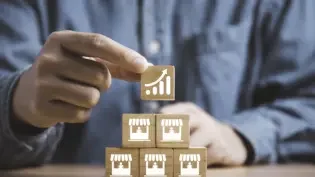Leading with Empathy: Human-Centered Design and Engineering
By: Redshift

Product design is a fundamentally compassionate act. After all, the best products come from designers who listen intently to the populations they serve and have empathy for the people who might use their product or service.
Unfortunately, the world is not full of those products. Perhaps designers and engineers fall victim to not yet realizing mass customization and personalization on an affordable scale. Maybe ever-shrinking timelines limit designers’ ability to get customer feedback early and often. Or maybe it’s just carelessness or narcissism by designers who don’t look beyond themselves for design requirements.
Regardless of the reason, there is a growing movement for a more empathic product-design process. It’s aptly named human-centered design. Here, experts in the field weigh in about what exactly human-centered design and engineering is and how designers and engineers can put it into practice.
Start With the Problem
To define human-centered design and its mindset, Timothy Prestero, CEO of Design that Matters, uses the example of a medical device that his firm created to treat newborns: “The Firefly is going to be primarily used by nurses, but the parents will watch their child be put into the device. The doctor will prescribe the use of the device for the nurses to apply it. A hospital administrator will approve the purchase of the device for their hospital. An international donor will provide the funds. An international regulatory body will approve the use of this device for human babies.
Related Article: How to Become a Product Designer
“So who’s our human?” Prestero continues. “In other words, if we’re going to do human-centered design, who are we centering on: the baby, the nurse, the doctor, the family? It turns out that there’s a large and complicated web of stakeholders, all of whom are necessary, but none of whom are sufficient. Meaning, if the parents are happy, that’s wonderful, but that doesn’t mean that you’re going to be successful. However, if the parents are unhappy, nobody’s going to use it. If the international regulatory body is unhappy or if the manufacturer is unhappy, if the international donors are unhappy—if any one of those stakeholders is unhappy or dissatisfied, then you’re done. You’re not going to be successful. So that’s why starting with the framing exercise of ‘who’ is so important.”
Prestero goes on to describe the importance of starting with a clear understanding of the problem to be solved, which is harder than it might seem. “In a human-centered-design context, the designer knows that his or her own satisfaction of a design is irrelevant; there is some group or user that they must satisfy,” he says. “That’s what I mean by, ‘Until you start asking the right question.’ Often, the right question is, ‘Design for who? Who are we trying to satisfy?’ That can be very complex.”
Encourage Storytelling
Liz Ogbu, founder and principal of Studio O, defines this process as getting to a fundamental need or desire that can be difficult to draw out of a relevant population when sourcing requirements. One of the techniques Ogbu uses in her work is to engage community members as “citizen experts” in the requirements-gathering process. She focuses much of her process around hearing stories, which she describes as “data with a soul.”
To illustrate, Ogbu recalls a recent Studio O project, in collaboration with firm envelopeA+D, to transform a former industrial site located in an underserved neighborhood in San Francisco. Instead of approaching the engagement process with potential site users through community meetings, Ogbu’s team created a “listening booth” and asked the users to tell their stories. This produced a far richer set of data, which enabled the client to take more risk because it had a clear understanding of what the community wanted—in the community’s own words.
Visit the Field in Teams and With Partners
Jocelyn Wyatt, co-lead and executive director of IDEO.org, also advocates for designers going into the field, in groups if possible: “We send teams of three or four people that come from different backgrounds. Maybe we’ll have someone with a digital design or interaction design background along with someone with a graphic design or communications design background, along with somebody who has a background in business.
“We also always partner with local and country partners,” she continues. “This could be an NGO or a grassroots organization that we’re working with in the place. Those folks, along with our team members, go on home visits, interviews, and shadow potential users. Working this way is mutually beneficial: We’re teaching them the human-centered-design approach, and they’re kind of being our cultural guides to help us better understand the local context.”
Leverage the Internet of Things for Data Collection and Analytics
Beyond the data collection that happens in the initial stages of a project, new technologies are coming into play that allow products to connect to the Internet and collect and transmit data. Many refer to that burgeoning class of products as the Internet of Things, but futurists believe that all products will be connected to the Internet in the near future. A connected Firefly from Design that Matters, for example, could allow for remote diagnostic evaluations and data collection.
Wyatt explains that IDEO.org is increasing its understanding of connected devices’ ability to play a role in development. The team is currently using connected devices and sensor technology in Myanmar to do things like measure the amount of clay in the soil. From those readings, the team could make recommendations to farmers about how much fertilizer they need; what the makeup of that fertilizer should be; when to spread that fertilizer; how much they can estimate the yield to increase as a result of fertilizing; and, finally, how much their income will rise as a result of that increased yield.
Recognize the Power of Prototyping
Although many of the projects and products born from this methodology cater to underserved populations, lessons in the process exist for all designers and engineers, regardless of product category. In almost all cases, a human user is somewhere in the value chain, after all!
One of the best ways to stoke a conversation about human-centered design is to create an environment where a prototype can convey that there is room for debate and improvement.
Heather Fleming—co-founder and CEO of Catapult Design, a powerhouse in the world of human-centered design—advocates for the important role prototyping plays: “Prototyping sort of implies that there are multiple solutions and not just one. People really get that, and it opens up the possibility of more than one solution and room for other ideas.”












